Content:
If the cucumber bushes look weakened and unhealthy, the fruits grow on them small and tasteless, many gardeners come to the conclusion that they have been affected by pests or diseases, without even realizing that the cause of poor growth and fruiting of the crop may be hidden in impoverished soil.
Lack of nutrients in cucumbers
The lack of microelements causes changes in the appearance of the bushes: their leaves change color, the fruits can deform and acquire a taste that is far from varietal in characteristics. In most cases, with a close examination of the leaf plates and the nature of the change in the shape of the fruit, one can draw conclusions about what the cucumbers lack.
What cucumbers lack in fruit shape
With insufficient nutrition, this culture produces deformed fruits. Often the crooked and irregular shape of the fetus can be used to determine what is missing.
- Cone. This curved cucumber shape is characterized by the sharpness of the fruit. If the tail of the fruit at the point of attachment of the flower sharpens, this means that the bushes are deficient in nitrogen. The fruit may look like a kind of hook.
- Pear. Pear-shaped cucumbers are characterized by a club-like shape that tapers towards the base and a spherical bulge at the other end of the fruit. This symptom most often indicates a lack of potassium nutrition.
How to determine the lack of fertilizers by cucumber leaves
The first sign of an unhealthy plant condition is a change in the appearance of the leaf blades. Most often, the lack of nutrients appears first on mature old leaves, and then affects young leaves. Changes can be seen in the outer covers of the plates: their structure, size and color change:
- if the leaf becomes dry and turns yellow, magnesium or nitrogen starvation may occur. If there is a dry border only along the edge of the leaf - potassium deficiency;
- bright yellow color characterizes iron deficiency;
- darkening of the leaves to a blue-green hue and color change lived on purple - phosphorus deficiency;
- if the cucumbers have small leaves, they lack nitrogen.
What cucumber seedlings are missing
If the seeds were planted in depleted soil, the seedlings may lack nutrients. It is possible to identify the deficiency of a particular element at the seedling stage by the state of the leaves and the growth rate:
- yellowing of the lower leaves of seedlings signals a deficiency of one of the nutrients: potassium, phosphorus or magnesium;
- if the upper part of the bushes turns yellow, they may lack trace elements in the soil (iron, boron, etc.);
- with a lack of nitrogen, the seedlings grow slowly and look frail;
- the elongation and thinness of the stems indicates a deficiency of potassium-containing fertilizers.
Lack of trace elements in cucumbers
Determination of the missing nutrient of a culture is simplified by knowing the symptoms of a lack of basic substances necessary for normal growth and development.
Lack of potassium
The lack of potassium in cucumbers negatively affects their taste characteristics: the fruits are watery, bitter, lose their aroma, and also on the yield - in this case, very few ovaries are formed on the bushes.The shelf life of the crop is sharply reduced, the fruits quickly rot after harvest. The lack of potassium in cucumbers manifests itself in a change in the color of the leaf plates of plants - they darken to a dark green hue and acquire a yellowish dry border, similar to a burn. If the potash deficiency is not eliminated for a long time, the leaf becomes leaky and wrinkled.
Lack of nitrogen
The lack of nitrogen in cucumbers can be determined by the decrease in the size of new leaf plates and the yellow color of old ones, as well as by the poor development of shoots and the absence of new shoots. The bush stops growing, stops developing. Lack of nitrogen in cucumbers during flowering and fruiting leads to a sharp decrease in plant productivity: they produce a small number of flowers and not all of them set fruits, but even if this happens, they do not grow to varietal sizes and remain small.
Lack of magnesium
For cucumbers, magnesium is one of the most important trace elements actively involved in the process of chlorophyll production. The lack of a trace element occurs when a crop is grown in acidified soil and / or with an excess of potassium in it.
Some gardeners confuse the signs of nitrogen and magnesium starvation, since in both cases, the leaf plates turn yellow. It is not difficult to distinguish them, it is enough to pay attention to the nature of the yellowing: if the leaf turns yellow in certain areas between the veins, and not evenly, the bush lacks magnesium.
Lack of iron
The deficiency of this trace element does not in any way affect the quality and size of the greens: only the leaves react actively, changing their main color to bright yellow, while the veins remain green.
Boron shortage
With a shortage of boron in cucumbers, leaves turn yellow and fall off, plants shed dried flowers. It appears as yellowish furrows on leaf plates and fruits.
Correct feeding
If signs of a lack of trace elements in cucumbers have been identified, and the diagnosis has been made, you need to feed them with fertilizers containing a high proportion of the missing mineral. For clarity, the methods of feeding in case of insufficient nutrition of the culture are summarized in the table.
Table 1 - Elimination of the deficiency of nutrients in cucumbers in the greenhouse and in the open field
| Missing battery | Foliar dressing | Root watering |
|---|---|---|
| Nitrogen | Spraying with urea solution - 5 tbsp. on a bucket of water. | Urea solution at the rate of 30 g per bucket of water. |
| Ammonium sulfate solution - 10 g per bucket of water. | From organic fertilizers use herbal infusion (2 kg of weeds per bucket of water to insist for 1 week). | |
| Potassium | Potassium sulfate in the amount of 8 g per bucket of water. | A solution of potassium sulfate, taken in an amount of 20 g per bucket of water. |
| Watering with ash infusion, working fluid consumption - 0.5 l / bush. | ||
| Phosphorus | Spraying over the leaf with a superphosphate solution - 60 g of fertilizer per bucket of water. | Ammophos is diluted at the rate of 1 tsp. fertilizers per 1 liter of water. |
| Magnesium | Magnesium nitrate, which is diluted at the rate of 100 g of fertilizer per bucket of water. | 15 ... 25 g of Kalimaga are added to a bucket of water. |
| Iron | Dilution of the ash extract in a soapy solution. | Watering with a solution of ferrous sulfate of 5% concentration. |
| Boron | For spraying, a boric acid solution is prepared, adding ¼ tsp. on a bucket of water. | Boric acid in an amount of 10 g is diluted in a bucket of water. |
When applying fertilizers, the recommended dosages must be observed, otherwise an excess of substances may occur, which also negatively affects the health of the bushes, or a chemical burn.
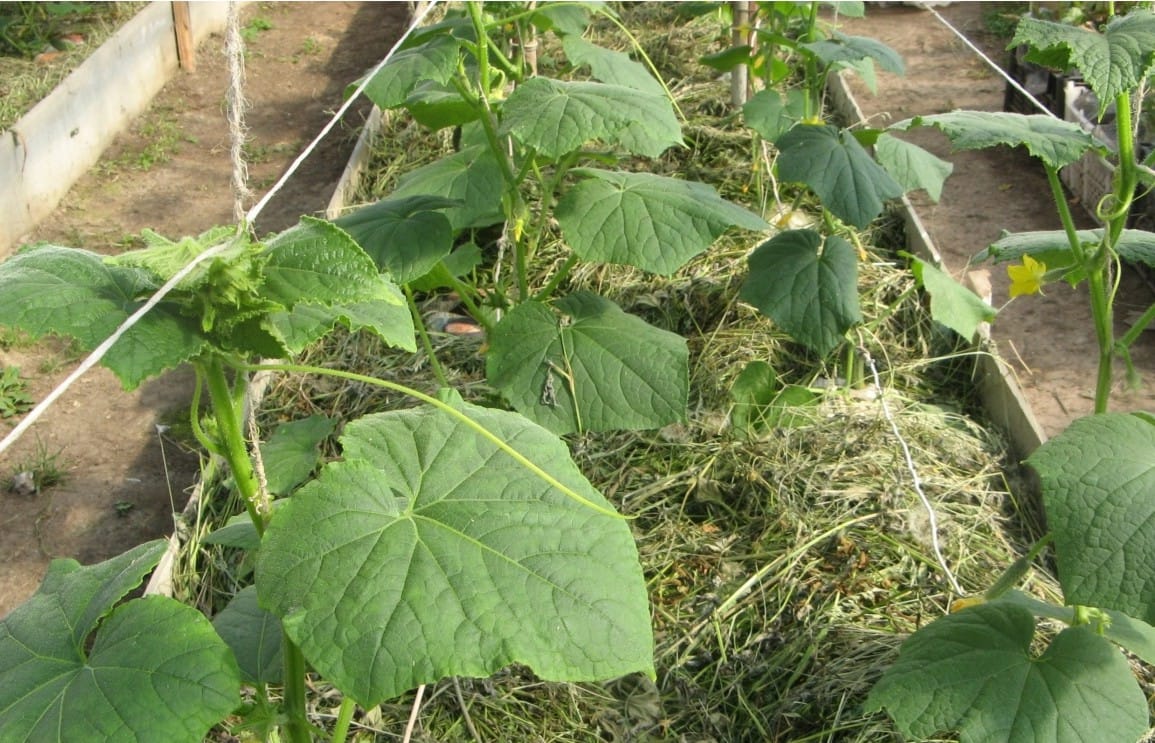
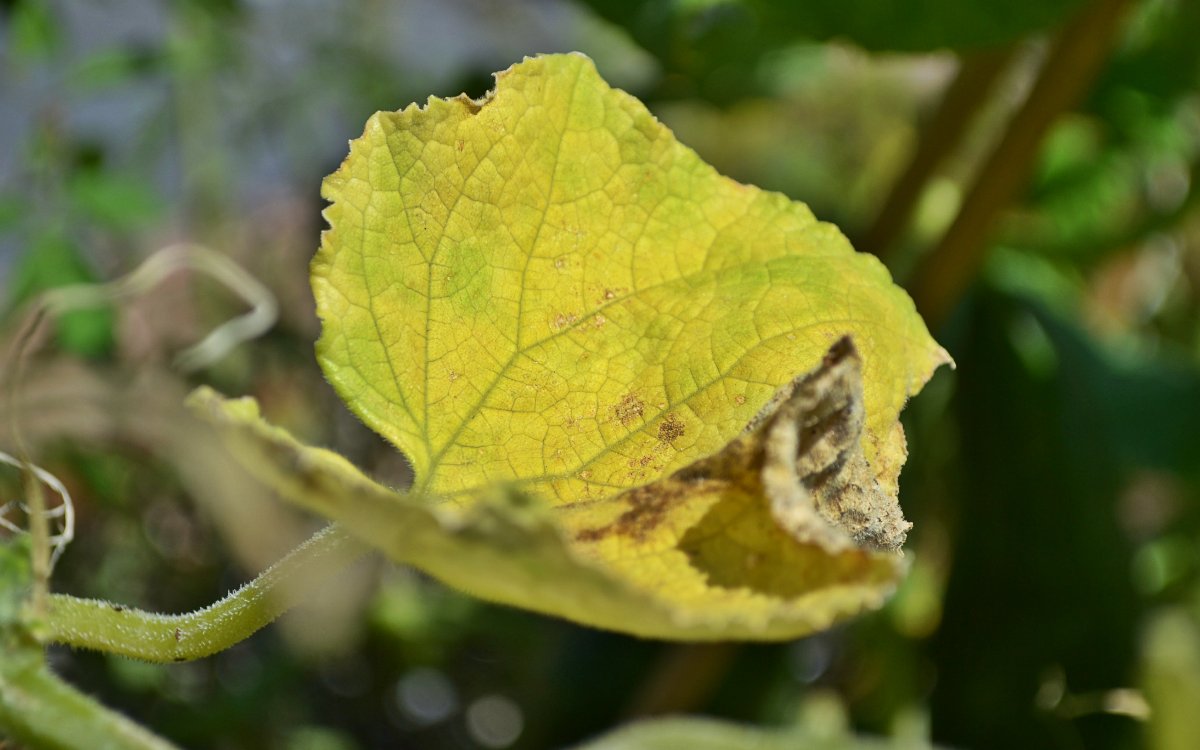
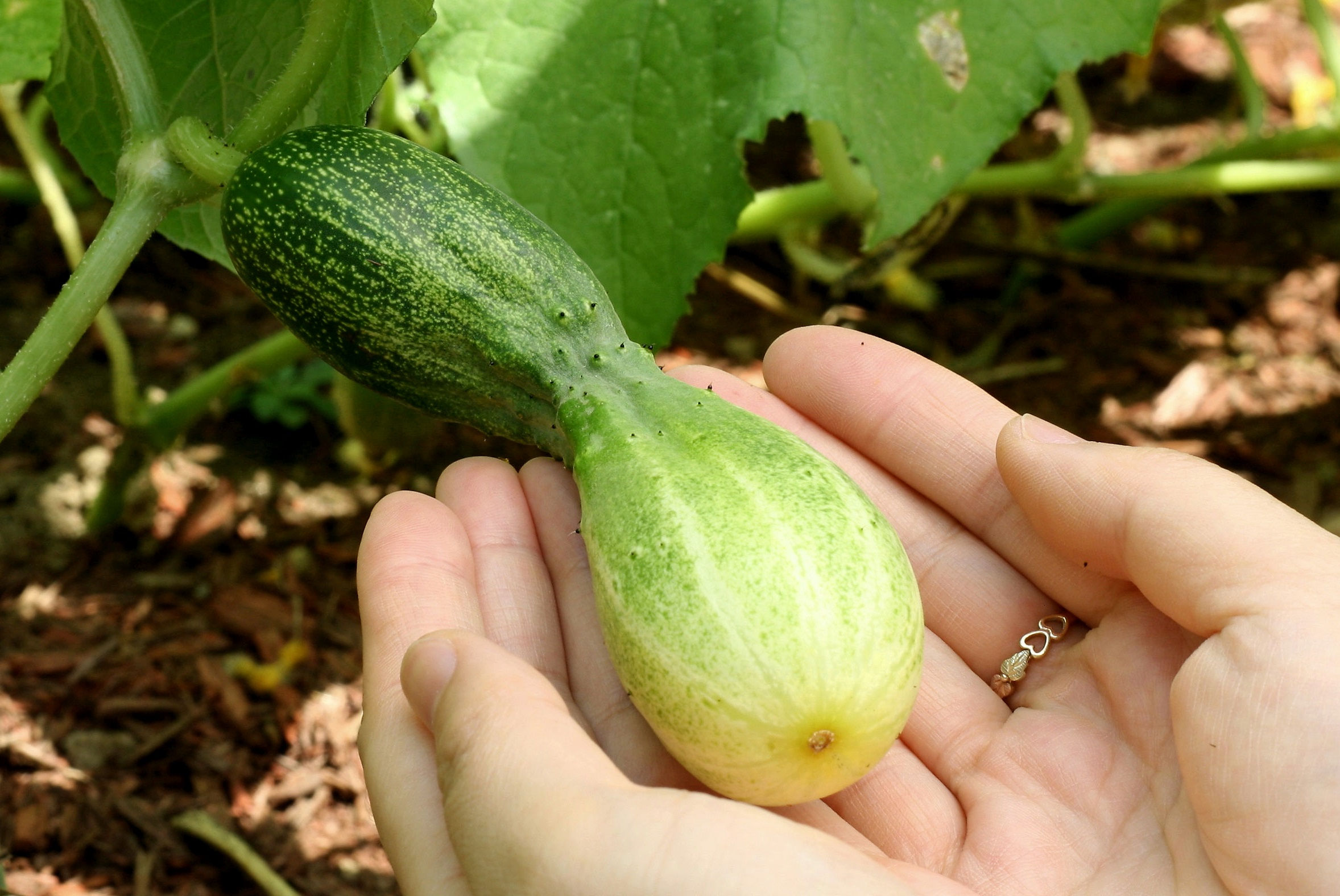
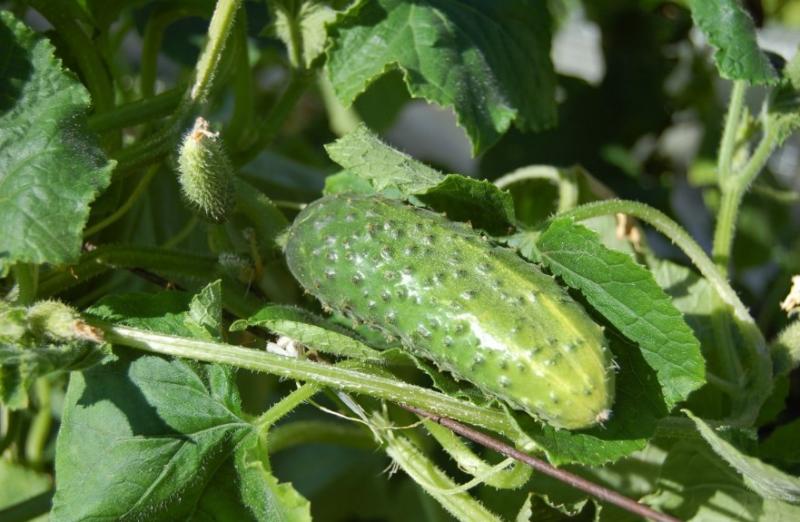
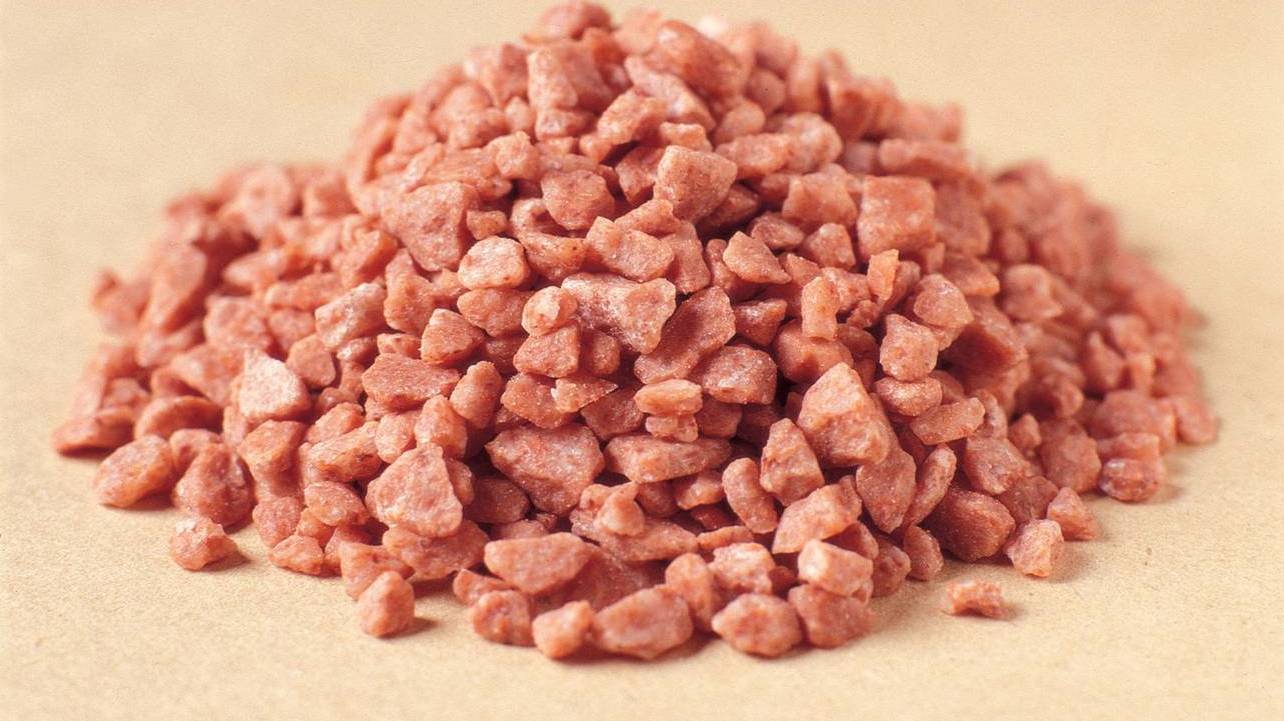
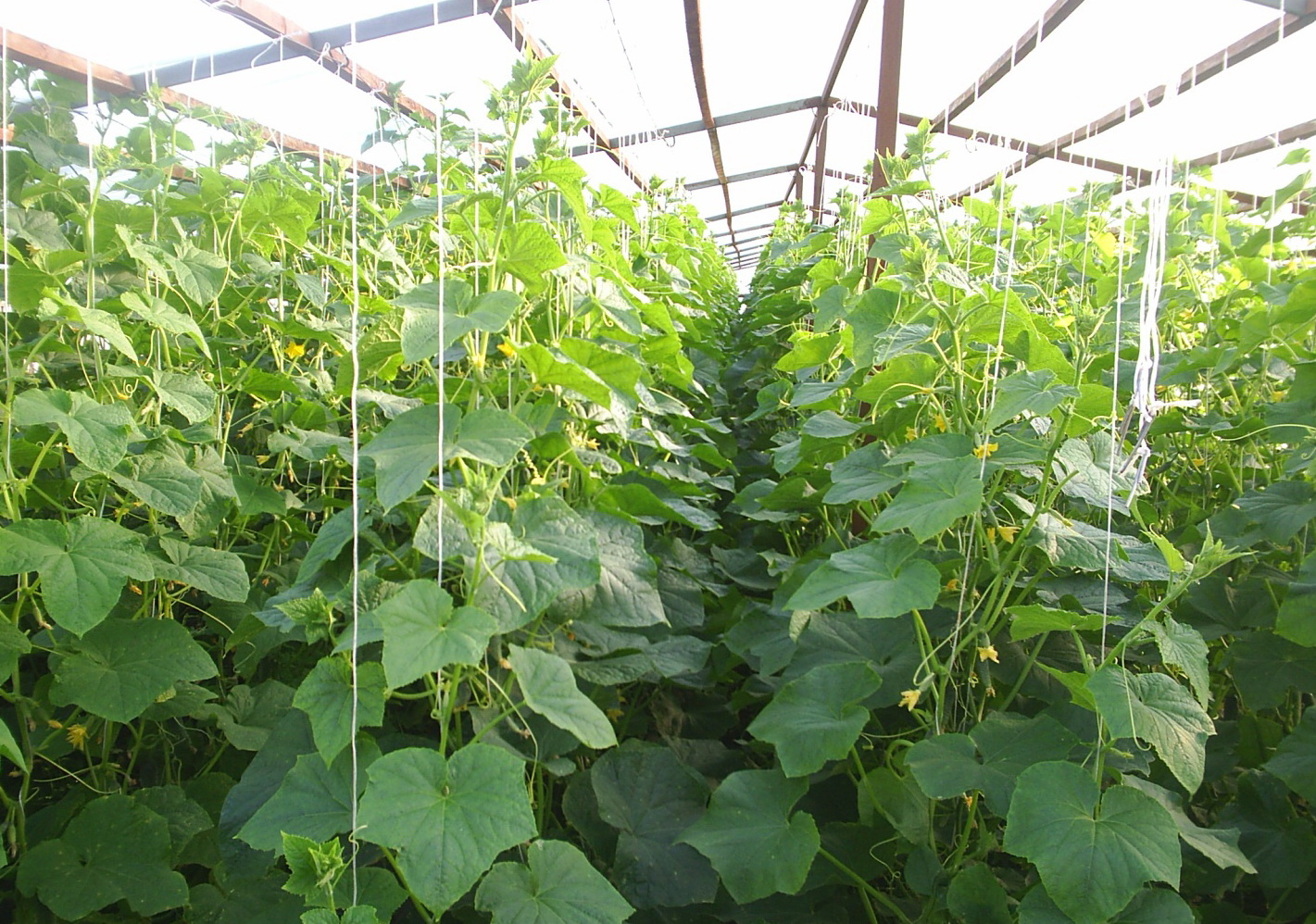
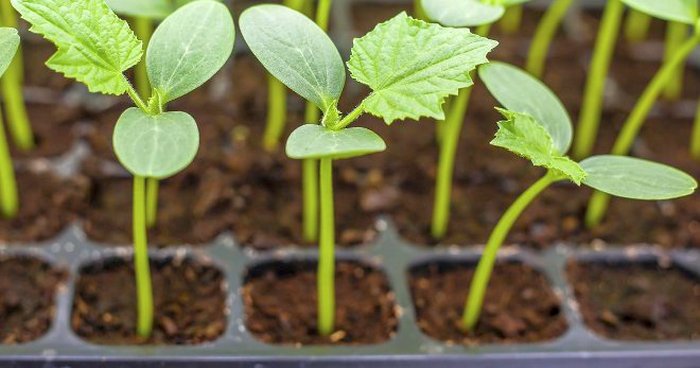
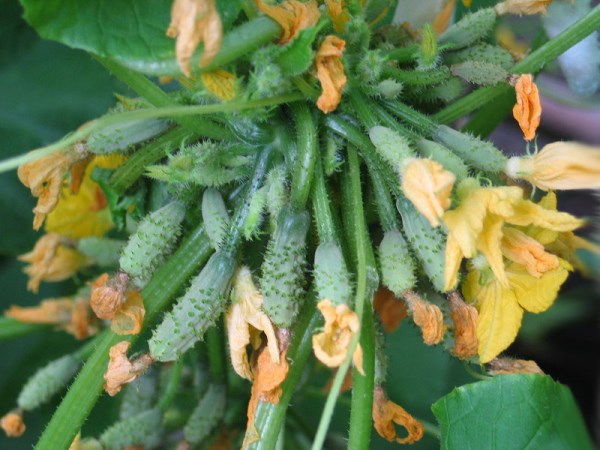
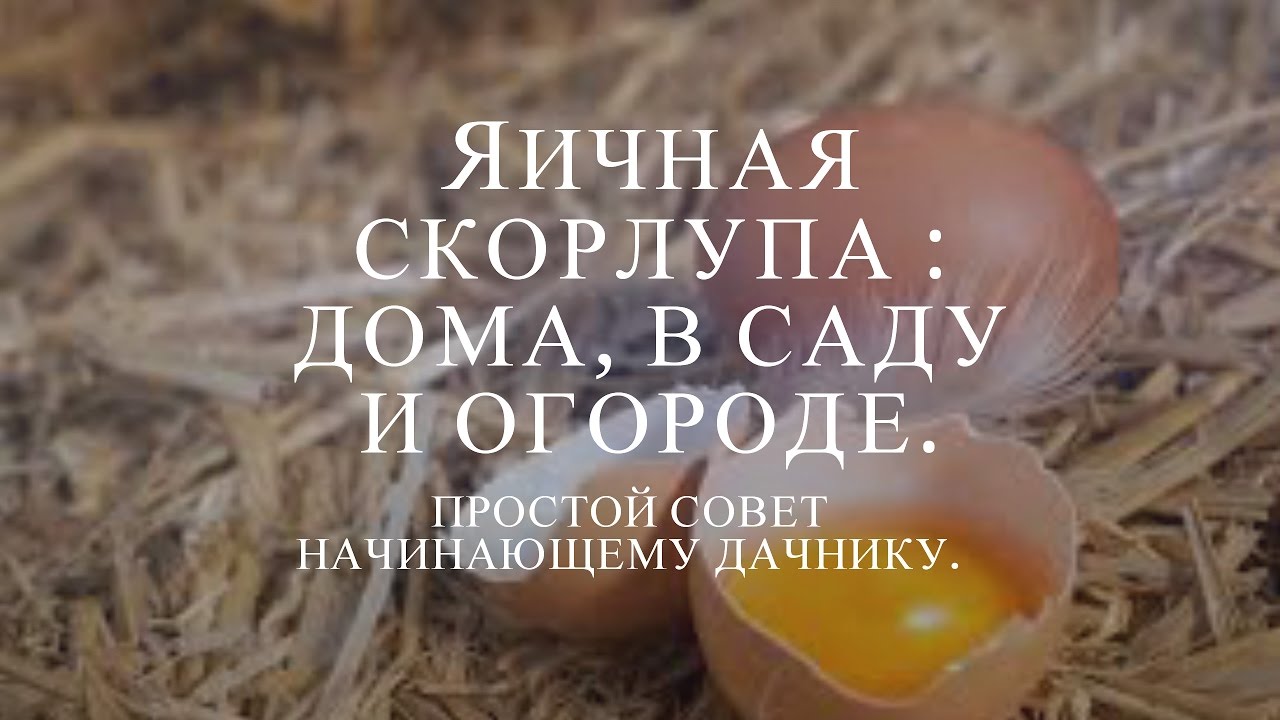







Lack of potassium in the soil leads to the formation of a light edging on the leaves of the plant. Cucumber leaves darken and take on a domed shape. cucumbers are rounded, tapering noticeably at the stalk. A rapid wilting of shoots occurs.
Lack of potassium in the soil leads to the formation of a light edging on the leaves of the plant. Cucumber leaves darken and take on a domed shape. cucumbers are rounded, tapering noticeably at the stalk. A rapid wilting of shoots occurs.